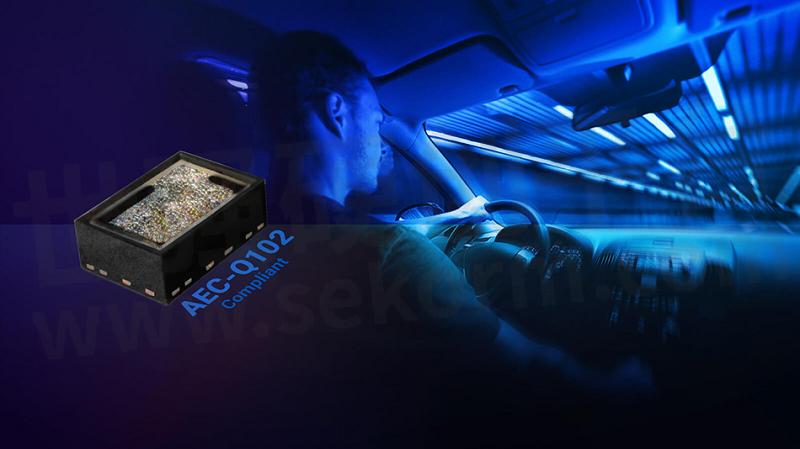II-VI Incorporated Announced AEC-Q102 Compliance of its 940 nm VCSEL Flood Illuminator Modules for Automotive In-Cabin Applications

II‐VI Incorporated, a leading provider of depth sensing technology, announced that its 940 nm vertical-cavity surface-emitting laser (VCSEL) flood illuminator modules are qualified to the Automotive Electronics Council’s AEC-Q102 quality standard for automotive in-cabin applications.

U.S. and European transportation safety regulators are increasingly recommending or requiring driver and occupancy monitoring systems in vehicles, fueling the demand for next-generation 2D and 3D infrared cameras designed with higher-performance infrared illuminators. II-VI’s new VCSEL Flood Illuminator Modules emit higher optical power with a narrower spectral width than infrared LEDs currently used in existing driver monitoring systems, enabling substantial improvements in 2D imaging performance. The infrared light emitted from II-VI’s flood illuminator modules can be modulated to frequencies greater than 100 MHz, making them ideal for high-resolution 3D time-of-flight cameras for driver and occupancy monitoring systems.
“Our new VCSEL flood illumination modules meet the stringent quality requirements of automotive applications and offer great value to our customers through our vertical integration of VCSEL chips, photodiodes, and diffuser optics,” said Dr. Julie Sheridan Eng, Sr. Vice President, Optoelectronic Devices & Modules Business Unit. “We are also leveraging our in-house, 6-inch, gallium arsenide semiconductor laser technology platform to achieve economies of scale.”
II-VI’s VCSELs and flood modules achieve a very high power-conversion efficiency and are available in surface-mount packages integrated with diffuser optics with either a narrow (60° x 45°) or wide (140° x 110°) field of view. The modules operate over the wide temperature range of -40°C to 105℃.
II-VI’s broad portfolio of products for sensing includes infrared VCSEL chips with one or up to hundreds of elements. II-VI also offers thin-film filters and diffractive optical elements (DOEs), including lenses, microlens arrays, diffusers, and splitters, that are produced at wafer scale for high-volume applications.
- +1 Like
- Add to Favorites
Recommend
- II-VI Unveils VCSEL Flood Illuminator Modules for Driver and Occupancy Monitoring Systems in Vehicles
- ROHM Develops a Novel VCSELED™ Infrared Light Source that Combines Features of VCSELs and LEDs
- High-performance Multi-junction VCSEL Laser Chips Boost Lidar and 3D Sensing
- Coherent Introduces VCSEL-Based Illumination Module Platform for Short- and Mid-Range Automotive and Industrial LiDAR
- Berxel Photonics demonstrates 106 Gbps VCSEL powered 800G transceiver with 100 meters transmission distance at CIOE 2023
- VCSEL Illuminators Deliver Higher Efficiency and Performance for Improved ADAS
- Coherent Reports Significant Advancement in VCSEL Performance for Next-gen AI Networks
- VCSELs and How to Keep Them Cool--Laird Thermal Solutions‘ smaller and cost-effective OptoTEC™ MBX Series
This document is provided by Sekorm Platform for VIP exclusive service. The copyright is owned by Sekorm. Without authorization, any medias, websites or individual are not allowed to reprint. When authorizing the reprint, the link of www.sekorm.com must be indicated.





























































































































































































































































































































































































































































































































































































































































































































































































































































































